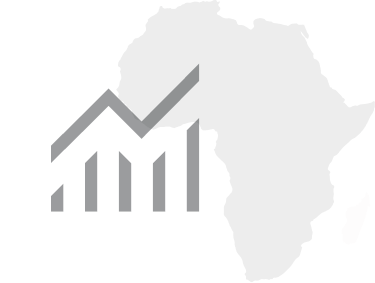Spotlight - Towards gender equality in Africa: data, challenges, and opportunities
05 December, 2023
The Ibrahim Index of African Governance (IIAG) monitors gender equality in Africa through one of its 16 sub-categories, evaluating women's political power and representation, equal rights and civil liberties, socioeconomic opportunities, equal access to public services, and laws on violence against women.
Women’s Equality: substantial improvement over the last decade (2012-2021)
Since 2012, Women’s Equality has experienced a substantial improvement on average across the continent, reaching a record score of 55.0 in 2021. It is the second most improved sub-category of the whole IIAG, with notable progress across all five indicators, particularly with regard to laws on violence against women.
Africa: Women's Equality scores (2012-2022)
Africa: Women's Equality indicator trends (2012-2021)
42 African countries have higher levels of equality for women than in 2012
Despite better legal protection for women, violence persists
Improvements in gender equality in Africa, in line with the United Nations Convention on the Elimination of All Forms of Discrimination against Women and the Maputo Protocol, have been achieved through legal and institutional reforms aimed at promoting equal participation and access to opportunities. However, as former Liberian President H.E. Ellen Johnson Sirleaf pointed out in the 2022 IIAG report, in addition to clear laws, there must be ‘‘the political will to ensure [their] implementation’’.
More laws on violence against women do not always lead to less violence against women. Despite ranking third in terms of improvement over 2012-2022 among the 81 IIAG indicators, violence against women persists on the continent, particularly in countries with high vulnerability to other forms of gender-based violence, such as intimate partner violence and child marriage.
One of the most common forms of violence against women is intimate partner violence
At 47%, DR Congo has the highest prevalence of intimate partner violence in Africa followed by Equatorial Guinea, Uganda and Liberia
Selected African Countries: Prevalence of intimate partner violence (2018)
The high prevalence of child marriage is a barrier to girls’ education and socioeconomic prospects
Child marriage is another form of gender-based violence prevalent on the continent. Poverty is recognised as the main cause of child marriage, as it is often seen as the only way for girls to gain financial security and ease the burden of expenses such as school fees.
Africa is home to 15 of the 20 countries with highest rates of child marriage globally
Currently, 130 million African girls and women are married as children, with Niger, Central African Republic, and Chad having the highest prevalence of child marriage
Countries with the highest levels of child marriage score poorly on gender parity in education and socio-economic opportunities for women.
Central African Republic (47th), and Chad (43rd) are among the lowest ranked countries on the Socioeconomic Opportunities for Women indicator, and are the two lowest ranked countries on the Gender Parity in Education sub-indicator
The latest Afrobarometer 2021-2023 survey confirms that gender-based violence is a major concern for African women, followed by political representation, access to education and socio-economic opportunities.
Selected African countries: Most Important Women's Issues (R92021-2023)
Poverty ‘still has a woman’s face’, and current crises risk worsening the situation
As UN Secretary-General António Guterres pointed out in 2020 at the High-Level Meeting on Gender Equality and the Empowerment of Women in Africa in Addis Ababa, poverty in the world ‘‘still has a woman's face’’.
The situation was aggravated by the COVID-19 pandemic, where women were disproportionately affected by lockdowns, school closures, supply chain disruptions and economic downturns. UN Women projects a substantial rise in the number of women and girls living in extreme poverty in sub-Saharan Africa, increasing from 249 million to 283 million between 2021 and 2030 due to the pandemic's fallout.
Women are also at the forefront of another major crisis: the climate emergency. According to UN Environment, 80% of those displaced by climate change are women. Vanessa Nakate, a Ugandan climate justice activist, stresses that climate change disproportionately affects the livelihoods of rural women and increases violence against women and girls in Africa. She points out: “The resulting poverty, made worse by the climate emergency, meant that too many girls weren’t in school because their families couldn’t afford the fees. Others were being married very young so their parents could receive some food or money in exchange, which could be crucial to their survival, but disastrous for the girls themselves.”
Thus, the pandemic, the climate crisis and all the related shocks risk not only reversing previous advances, but also exacerbating the challenges faced by women in the region. It is in this context of multiple crises that the quest for gender equality continues, in the hope of reducing the current 102-year gender gap.


